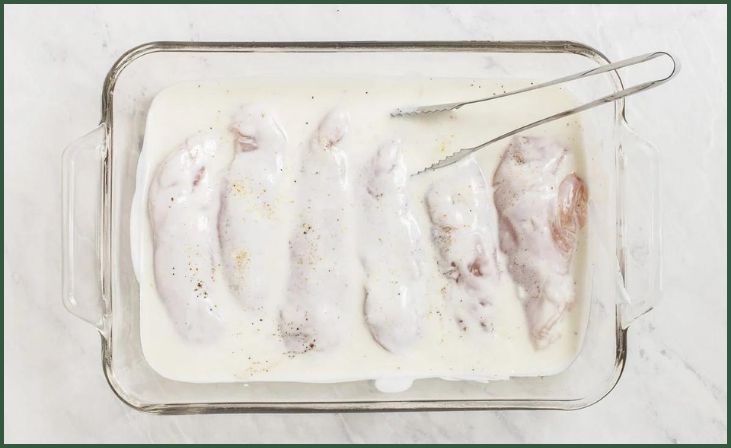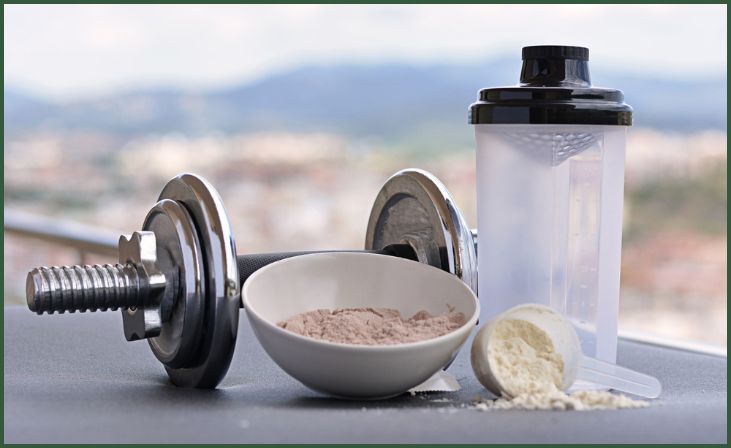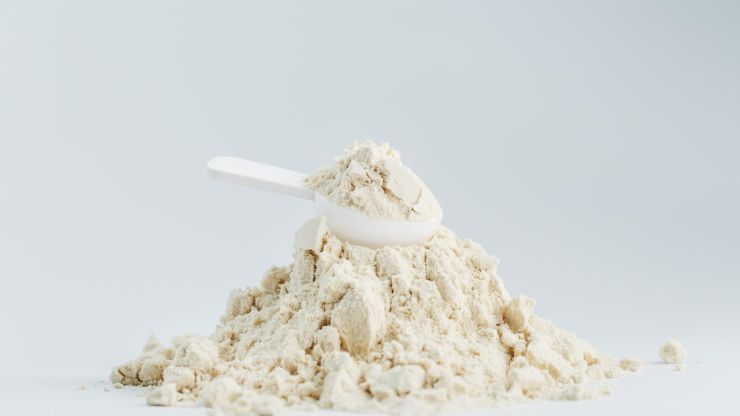Welcome to our comprehensive guide on the myriad benefits and applications of whey, a protein-rich byproduct of cheese-making. From enhancing your culinary endeavors to promoting personal wellness, we delve into the versatile world of this valuable ingredient, providing you with insightful tips and creative suggestions to make the most of it.
Table of Contents
Toggle15 Uses for Whey
Nutrient-Packed Smoothies

Whey serves as an excellent base for nutrient-packed smoothies, blending seamlessly with fruits, vegetables, and other ingredients to create a creamy and protein-rich beverage. Whether you’re looking to boost your energy or satisfy your hunger, a whey-infused smoothie is the perfect choice for a quick and nutritious snack or meal replacement.
Customize your smoothies with a variety of flavors and superfoods, incorporating whey to ensure a satisfying and well-rounded drink that caters to your specific nutritional needs, whether it’s for post-workout recovery or a wholesome breakfast on the go.
Bountiful Baked Goods
Incorporating whey into your baking endeavors adds a nutritional twist to your favorite treats. From moist and protein-rich muffins to fluffy and wholesome bread, using whey in your baked goods not only enhances their texture but also increases their nutritional value, making them a guilt-free indulgence for any time of the day.
Explore various recipes that incorporate whey into your baked goods, ensuring that each treat not only satisfies your cravings but also provides a wholesome and nutritious option that caters to your dietary goals, whether you’re seeking a balanced snack or a hearty breakfast to start your day on a healthy note.
Also Read: Salt Preserved Limes
Protein-Packed Energy Bars
Create homemade energy bars that are both convenient and packed with protein by adding whey to the mix. These bars are perfect for those on the go, providing a satisfying and nutritious snack to keep you fueled and focused throughout the day, whether you’re tackling a tough workout or simply need a quick pick-me-up between meals.
Experiment with different combinations of nuts, seeds, and dried fruits, incorporating whey to ensure that each energy bar not only satisfies your taste buds but also provides a substantial and well-balanced snack that helps you stay energized and satiated while managing your busy schedule.
Wholesome Breakfast Delights
Transform your morning routine with delicious and protein-rich breakfast options that incorporate whey. From fluffy and flavorful pancakes to hearty and nutritious waffles, using whey in your breakfast classics not only enhances their taste but also keeps you full and satisfied, providing the energy you need to kick-start your day on a healthy note.
Experiment with various toppings and flavors, incorporating whey to ensure that each breakfast delight not only satisfies your cravings but also provides a substantial and well-rounded meal that helps you stay focused and productive throughout the morning, whether you’re preparing for a busy day at work or a relaxing weekend at home.
Post-Workout Recovery Drinks
Replenish your body after an intense workout by incorporating whey into your post-exercise recovery drinks. Whether you prefer a simple whey protein shake or a more elaborate blend of fruits and vegetables, these beverages provide your muscles with the necessary nutrients for repair and growth, ensuring that you recover quickly and effectively after each training session.
Experiment with different combinations of ingredients, incorporating whey to ensure that each recovery drink not only helps soothe your tired muscles but also provides a refreshing and nourishing option that supports your fitness goals and overall well-being, whether you’re an athlete or a fitness enthusiast looking to optimize your training regimen.
Creamy Yogurt and Oatmeal Boosts
Add a creamy and protein-rich twist to your morning yogurt or oatmeal by mixing in whey. This simple addition not only enhances the nutritional value of your breakfast but also provides a satisfying and filling start to your day, ensuring that you stay energized and focused until your next meal.
Experiment with different toppings and flavors, incorporating whey to ensure that each yogurt or oatmeal bowl not only satisfies your taste buds but also provides a substantial and well-balanced meal that helps you stay satiated and nourished throughout the morning, whether you’re preparing for a busy day at work or a relaxing weekend at home.
Flavorful Salad Dressings
Elevate your salads with creamy and nutritious dressings that incorporate whey. By adding this ingredient to your homemade dressings, you not only create a delightful texture but also infuse your salads with an extra dose of protein, turning a simple side dish into a wholesome and satisfying meal option that is as delicious as it is nutritious.
Experiment with different combinations of herbs and spices, incorporating whey to ensure that each salad dressing not only enhances the flavors of your fresh produce but also provides a substantial and well-rounded option that helps you stay satisfied and nourished throughout the day, whether you’re enjoying a light lunch or a refreshing dinner with friends and family.
Tenderizing Meat Marinades

Utilize whey as a natural and effective tenderizer for your meat marinades. The enzymes present in whey help break down the muscle fibers, resulting in meats that are not only juicy and flavorful but also incredibly tender, making every bite a delectable and unforgettable experience for your taste buds.
Experiment with different combinations of spices and herbs, incorporating whey to ensure that each meat marinade not only enhances the flavors of your favorite cuts but also provides a substantial and well-rounded option that helps you create mouthwatering dishes for any occasion, whether you’re hosting a barbecue or preparing a special dinner for your loved ones.
Don't just scroll, subscribe!
BuzzTrail's unique web-stories are the cure for boredom you've been waiting for.
Revitalizing Face Masks
Pamper your skin with a revitalizing and nourishing face mask that incorporates whey. By combining this ingredient with natural elements like honey and yogurt, you provide your skin with essential nutrients and hydration, leaving your face feeling refreshed, rejuvenated, and glowing with natural radiance.
Experiment with different combinations of skincare ingredients, incorporating whey to ensure that each face mask not only soothes and revitalizes your skin but also provides a luxurious and pampering experience that helps you relax and unwind after a long day, whether you’re preparing for a special event or enjoying a quiet evening at home.
Eco-Friendly Cleaning Solutions
Embrace a more eco-friendly approach to cleaning by using whey as a natural household cleaning agent. With its acidic properties and mild scent, whey effectively removes dirt and grime, leaving your home clean and fresh without the use of harsh chemicals, making it a safer and more sustainable option for your cleaning needs.
Experiment with different cleaning solutions, incorporating whey to ensure that each eco-friendly cleaner not only effectively tackles tough stains and spills but also provides a gentle and non-toxic option that helps you maintain a healthy and environmentally conscious home, whether you’re tidying up your living space or deep cleaning your kitchen and bathroom.
Rich and Creamy Soups
Enhance the texture and flavor of your soups by adding whey as a thickening agent. Whether you prefer a hearty vegetable soup or a creamy and decadent chowder, incorporating whey not only adds a rich and velvety consistency but also boosts the nutritional content of your soups, making them a satisfying and wholesome meal option for any time of the year.
Experiment with different combinations of vegetables and herbs, incorporating whey to ensure that each soup not only warms and comforts your soul but also provides a substantial and well-rounded option that helps you enjoy a nourishing and flavorful meal, whether you’re seeking a comforting dinner or a hearty lunch to fuel your day.
Moist and Flavorful Bread
Infuse your homemade bread with added moisture and a subtle hint of flavor by incorporating whey into your recipes. The natural properties of whey not only help keep your bread moist and fresh for longer but also add a delicate and savory note that will have you reaching for another slice, making your homemade loaves a favorite among friends and family.
Experiment with different types of bread and grains, incorporating whey to ensure that each loaf not only satisfies your cravings but also provides a wholesome and delicious option that helps you enjoy a comforting and satisfying snack, whether you’re preparing a light meal or enjoying a leisurely afternoon with loved ones.
Natural Fertilizer for Plants
Utilize whey as a natural fertilizer for your plants, providing them with essential nutrients that promote healthy growth and vibrant blooms. With its rich content of beneficial minerals and proteins, whey serves as an effective and eco-friendly option for nurturing your garden, ensuring that your plants thrive and flourish, adding a touch of natural beauty to your outdoor space.
Experiment with different types of plants and flowers, incorporating whey to ensure that each fertilizer not only enriches the soil but also provides a nourishing and sustainable option that helps you maintain a vibrant and flourishing garden, whether you’re cultivating a vegetable patch or creating a colorful display of flowers and herbs.
Protein-Infused Pasta and Noodles
Boost the protein content of your favorite pasta and noodle dishes by cooking them in whey-infused water. This simple cooking hack not only adds a subtle hint of flavor to your dishes but also increases their nutritional value, making your pasta and noodles a healthier and more satisfying option for any meal of the day.
Experiment with different types of sauces and toppings, incorporating whey to ensure that each pasta and noodle dish not only satisfies your appetite but also provides a substantial and well-rounded option that helps you enjoy a flavorful and wholesome meal, whether you’re preparing a quick dinner or indulging in a leisurely lunch with family and friends.
Savory and Nutritious Gravy

Create a savory and nutritious gravy by incorporating whey into your recipes. Whether you’re making a rich and flavorful meat-based gravy or a hearty and satisfying vegetarian option, using whey not only adds a creamy and wholesome texture but also infuses your dishes with an extra dose of protein, making your meals a delightful and satisfying experience for your taste buds.
Experiment with different combinations of spices and herbs, incorporating whey to ensure that each gravy not only complements your main course but also provides a substantial and well-rounded option that helps you create a memorable and delicious meal, whether you’re hosting a festive gathering or enjoying a cozy dinner at home with loved ones.
Also Read: Preserving the Harvest for Winter
Tips for Using Whey
- Enhance Your Morning Routine: Wake up to a power-packed breakfast by blending a scoop of whey protein into your favorite smoothie. Enjoy the perfect combination of taste and nutrition that will keep you energized throughout the morning.
- Elevate Your Baked Goods: Give your homemade bread, muffins, and cakes a wholesome twist by substituting a portion of the liquid in your recipes with whey. Not only does this add a protein boost to your baked treats, but it also enhances their texture and moistness.
- Create Delicious and Nutritious Snacks: Experiment with adding flavored whey to your homemade energy bars or protein balls. These convenient, on-the-go snacks are not only delicious but also offer a satisfying burst of energy, making them an ideal choice for busy days.
- Revamp Your Breakfast Classics: Upgrade your pancake or waffle batter by incorporating whey. This simple addition results in a breakfast that is not only fluffy and delicious but also rich in protein, keeping you full and focused until your next meal.
- Craft a Post-Workout Recovery Drink: Mix whey protein with water or your favorite type of milk for a quick and effective post-workout recovery drink. This simple solution replenishes your body with essential nutrients, helping to repair and rebuild your muscles after an intense workout.
- Transform Your Morning Staples: Stir a serving of whey into your daily yogurt or oatmeal for an extra dose of protein and creaminess. This versatile addition not only enhances the nutritional value of your breakfast but also adds a satisfying texture to your favorite morning meal.
- Add a Twist to Your Salad Dressings: Experiment with using whey to create creamy and nutritious salad dressings. Incorporating this ingredient into your homemade dressings not only adds a delightful texture but also infuses your salad with an extra protein boost, making it a wholesome and flavorful meal option.
- Tenderize Meats with Whey: Utilize whey as a secret ingredient in your meat marinades. The natural enzymes in whey act as a tenderizer, infusing your meats with moisture and a subtle hint of flavor that will leave your taste buds craving for more.
- Pamper Your Skin with a Whey Face Mask: Combine whey with natural ingredients like honey and yogurt to create a revitalizing face mask. This nourishing blend not only hydrates and rejuvenates your skin but also provides it with essential nutrients, leaving your face feeling refreshed and radiant.
- Reduce Food Waste with Whey: Minimize food waste by using whey in place of water when cooking rice or grains. This simple substitution not only infuses your side dishes with an additional protein punch but also adds a delicate flavor that will elevate your meal to a whole new level of deliciousness.
Also Read: How Does Alcohol Fermentation Work
Conclusion
As you explore the diverse array of applications for whey, we hope this guide has sparked your creativity and inspired you to incorporate this valuable ingredient into your lifestyle. From fitness enthusiasts to culinary aficionados, whey’s multifaceted nature offers an abundance of possibilities, fostering a healthier, more vibrant approach to daily living. Unleash the potential of whey and savor the benefits it brings to your overall well-being.
FAQs
What are the nutritional benefits of incorporating whey into my diet?
What are the nutritional benefits of incorporating whey into my diet?
Whey packs a powerful nutritional punch, boasting a rich profile of essential amino acids, protein, and key nutrients vital for muscle recovery, weight management, and overall health.
How can I integrate whey into my daily routine beyond protein shakes?
How can I integrate whey into my daily routine beyond protein shakes?
Embrace the versatility of whey by using it in recipes for delectable pancakes, wholesome muffins, or even as a nutrient-rich addition to your morning oatmeal, thereby elevating your meals with an extra dose of health and flavor.

